Now is the season in Italy when the olives have the highest content of oil, have a lower acidity and a milder flavour. This is precisely when they are picked and pressed into olive oil. Olive oil is used throughout Italy. This golden elixir has been held in high esteem since ancient times not only for its fine flavour but also for its beneficial healthy properties in reducing the risk of heart disease and benefiting the circulatory system.
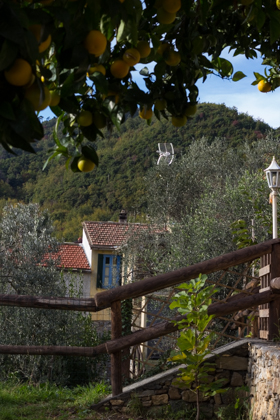
The view from Le 3 Case Agriturismo in Paravenna, Liguria
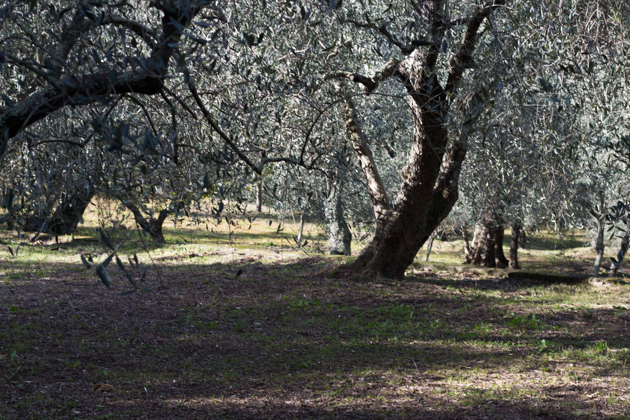
The olive grove
Like most things in life, not all olive oil is created equal. In Italy, there is general agreement that the two regions that produce the best olive oil are Liguria and Toscana (Tuscany), particularly the Lucca area. (However, this does not mean that producers in other regions do not produce world class olive oil.)
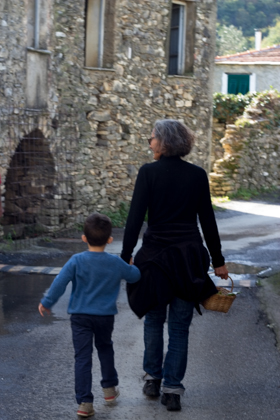
My son with his madrina (godmother)
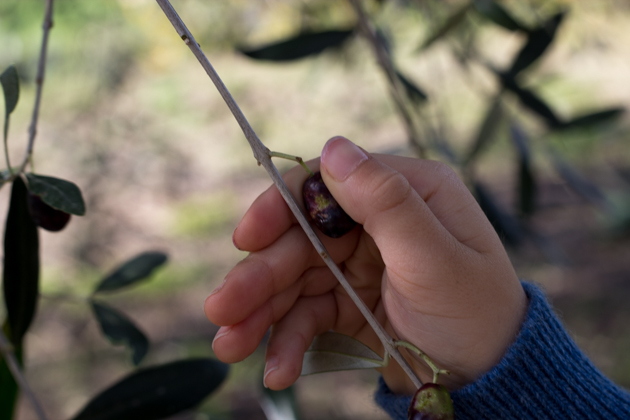
My son picking olives
We headed to Liguria so my son could visit his godmother and we could all help pick olives to press into oil. Sadly after the terrible weather this summer and the destruction caused by the olive fruit fly, the olives were few, small and blemished. This did not deter my small sons who picked what little they found quite happily. We also found some ripe sharon fruit (persimmons) on a nearby tree and kiwis to add to our basket.
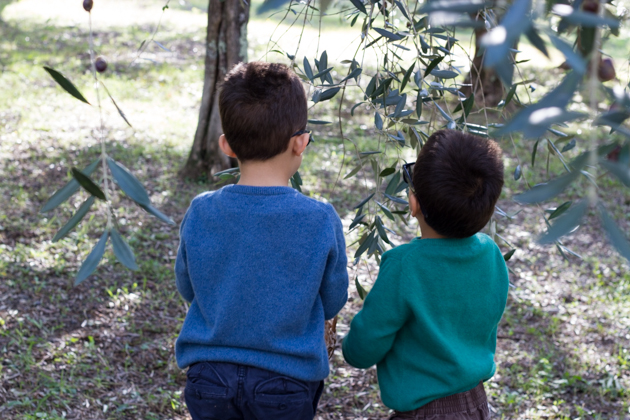
The brothers picking olives
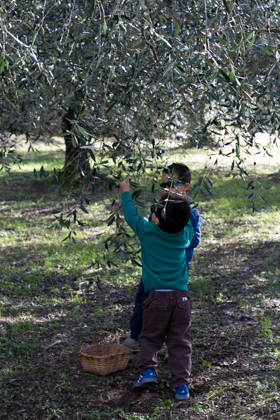
The brothers picking olives
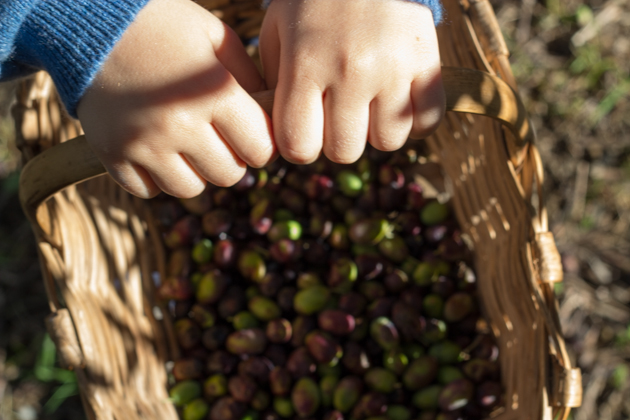
Our olives
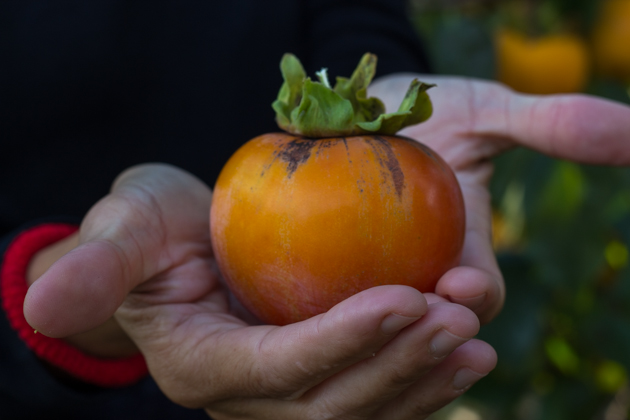
Sharon fruit (persimmon)
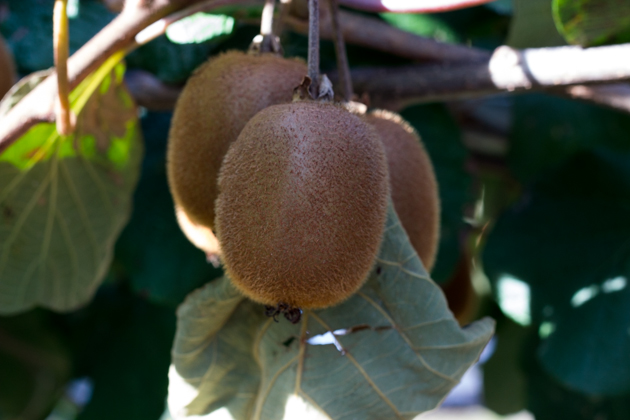
Kiwis
After picking olives all morning, we sat on the terrace for some excellent farinata (a traditional ligurian dish consisting of a chickpea crepe baked in olive oil), lasagne and torta verde (a Ligurian savoury pie filled with chard, artichokes and ricotta) all washed down with a local bottle of Pignato.
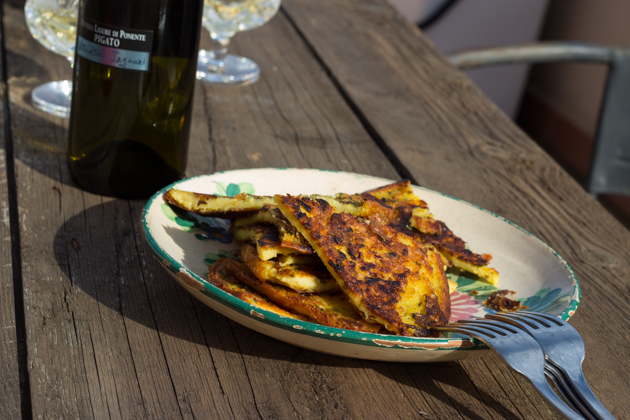
Farinata (chickpea crepes)
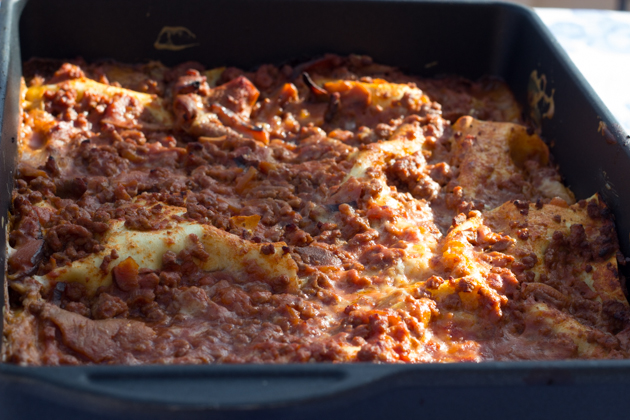
Lasagne
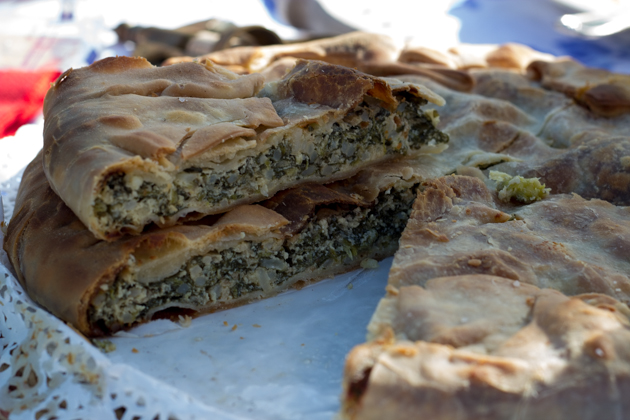
Torta verde (savoury pie of chard, artichokes and ricotta)
In the afternoon we headed to the olive oil press at Baglietto & Secco in Villanova d’Albenga to see the olives being cold pressed by two enormous stone wheels. We watched as father and son, brothers and couples would come with their olives to be weighed and pressed. They watched with such satisfaction and pride the fruit of their efforts which they would enjoy until the following year. Each 100 kilos of olives they picked will reap a mere 15 to 20 litres of olive oil. It is obvious that they think the best olive oil is made from the olives from their own land.
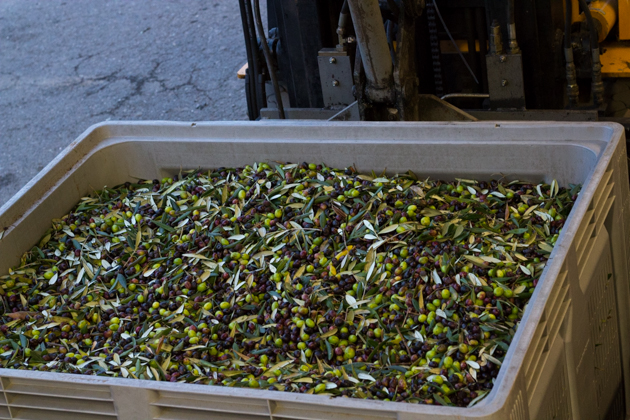
The olives being weighed
The olives are weighed, separated from the leaves and washed.
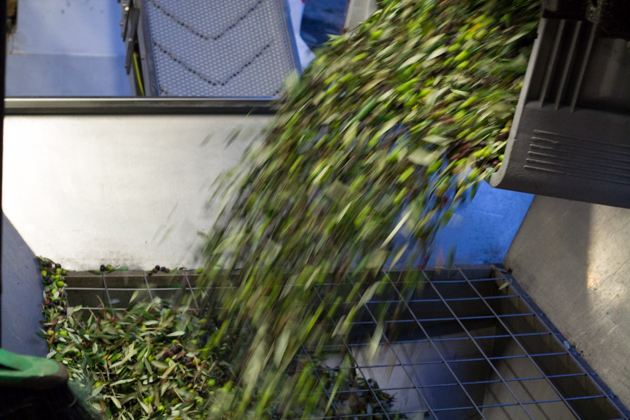
The olives poured into the machine to remove the leaves
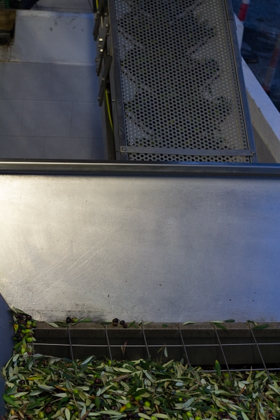
The olives being lifted to the machine which will wash them
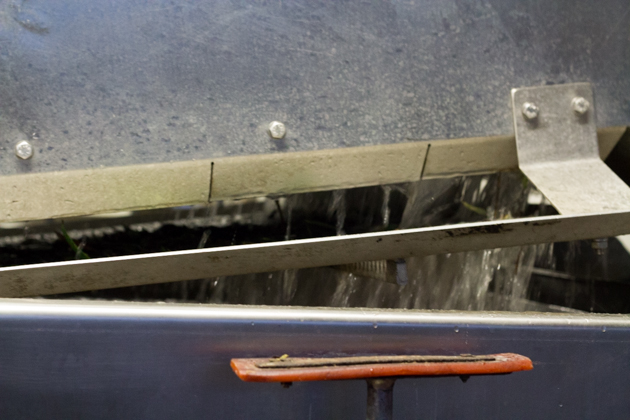
The olives being washed
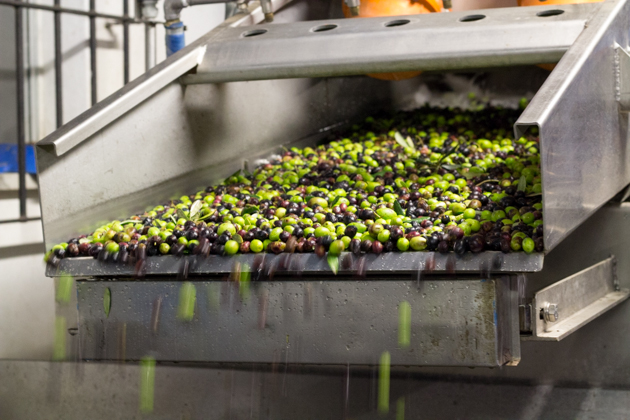
The clean olives being moved to the grinder
They are then pressed by rolling two huge stone wheels over them and are agitated for 40 minutes. The oil is then separated out from the pits and solids before being bottled.
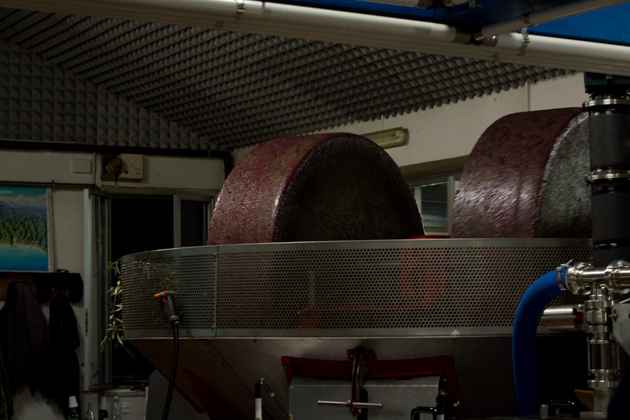
The stone wheels grinding the olives
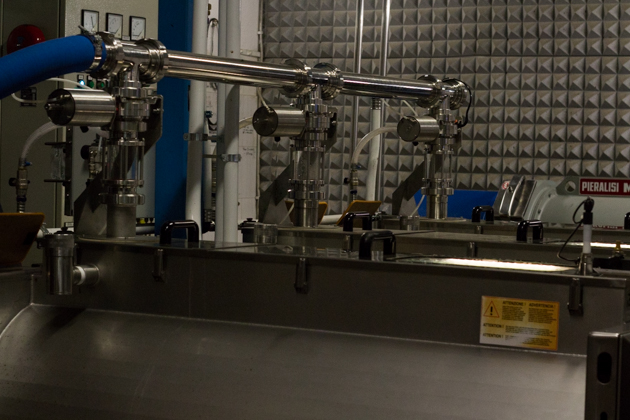
The machines to agitate the olive pulp
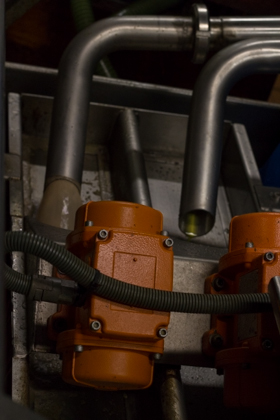
The olive oil (right) separated from the pulp and water (left)
100 kilos of olives will produce 45 kilos of water and 35 kilos of pits and solids. Nothing is wasted in this process. The olive pits are used for fuel, the water used as fertiliser and the solids sold to biogas firms. The olive oil is drained into large cans. The sweetest thing was watching an elderly couple walk away grasping the handle of their tin between them with smiles of contentment on their faces.
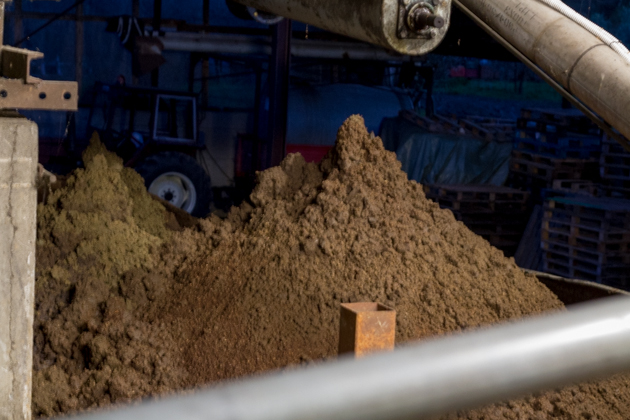
The mountain of pulp to be sold to biogas firms
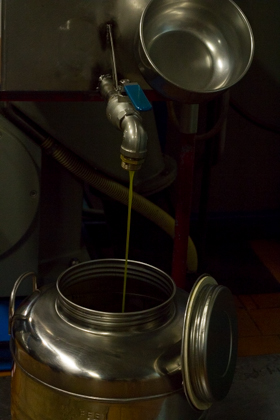
The resulting olive oil
Local ligurian dishes are often perfumed with their delicious olive oil. The torta verde we had for lunch is one of my favourite dishes and is perfect as a starter, a light lunch or to take on a picnic. It is the simplified everyday version of the more famous torta pasqualina, a rich savoury pie served at Easter to commemorate Jesus’s life. It has 33 layers of pastry representing each year of his life and 12 eggs baked on top of the filling, representing the 12 apostles (Jesus’s disciples).
This dish can be made quickly if homemade pastry is substituted by frozen puff pastry. For the full version of the recipe with step by step photographs, see here.

Torta verde (savoury pie of chard, artichokes and ricotta)
Ingredients:
- 200 gms flour, sifted
- 2 gms/½ teaspoon salt
- 20 ml extra virgin olive oil
- 1 kilo chard (preferred), beet greens, or spinach
- 50 gms Parmigiano-Reggiano cheese, finely grated
- 2 pinches of dried marjoram
- 160 mls extra virgin olive oil
- 1 medium onion, skin removed, end cut, finely chopped
- 10 large artichokes, frozen or fresh (not tinned), trimmed
- ½ lemon, juiced
- 55 gms breadcrumbs (can substitute 100 grams of cooked rice)
- 250 mls whole milk (if using rice, reduce milk to 50 mls)
- 4 eggs
- 600 grams ricotta, drained
- 20 grams butter
- Salt
- Black pepper, freshly ground
Instructions
- Mix the flour and salt and drizzle the oil in, mixing with a fork.
- Add 130 mls of water, 1 tablespoon at a time until the dough holds together.
- Knead for 15 minutes until the dough forms a soft, smooth, and elastic ball. If the dough is too wet use floured hands to add a bit more flour until it is no longer sticky. If the dough is too hard then sprinkle a bit of water on the dough and work to combine the water. Cover with a wet towel for 2 hours.
- Oil a metal cake tin with olive oil. (If the tin is not metal, then the pastry might be soggy.)
- Divide the dough into two balls with 2/3 of the dough in one ball and 1/3 of the dough in the other ball. Roll out the larger ball on a floured surface stretching it with your hands to 38 cm in diameter and place into the prepared cake tin.
- Heat the oven to 190C.
Filling:
- Strain the ricotta cheese.
- If using beet greens or chard, cut the ribs out. Wash the leaves well and cut finely with 1 ½ tablespoon of salt sprinkled over top and let sit for half an hour.
- Squeeze out the leaves to remove any moisture as you want the greens as dry as possible.
- Sprinkle the greens with 20 grams of Parmigiano-Reggiano cheese and marjoram.
- Stir to combine.
- Heat a large sauté pan and put 60 mls of the olive oil in the pan. When the oil is hot, reduce the heat to low and add the onion.
- Cook the onion for 5 minutes or until soft.
- Add the sliced artichokes and 100 mls of water (if you are using frozen artichokes then turn the heat up to medium) and cook until the artichokes are soft (about 10 minutes) and the water has evaporated and then season with salt and pepper.
- Add the prepared chard, beet greens, and/or spinach leaves.
- Cook until the greens are soft and add the lemon juice and 60 mls extra virgin olive oil. Remove from the heat.
- In a bowl, mix the breadcrumbs and milk until the milk is absorbed.
- In another bowl, add the 4 eggs with 20 grams of Parmigiano-Reggiano cheese.
- Beat the eggs and cheese together.
- Add the strained ricotta to the eggs. Mix together.
- Use a wooden spoon to mix the breadcrumbs and the egg mixture together.
- When the greens and artichokes are cool, add the egg breadcrumb mixture.
- Stir to combine and add 80 mls of extra virgin olive oil .
- Mix well.
- Evenly spread the filling into the cake pan with prepared crust with 1 inch of the crust hanging over the edge. Top the filling with some butter, salt and pepper, and 20 grams of Parmigiano-Reggiano cheese.
- Roll the smaller ball to 32 cm and place on top of the filling. Wet the edge of the bottom crust and fold and crimp the edges. Pierce the top of the crust with a fork, using your finger to make indentations, drizzle 20 mls of olive oil over the top.
- Bake for 1 hour and 20 minutes or until the pastry is golden brown and crispy.
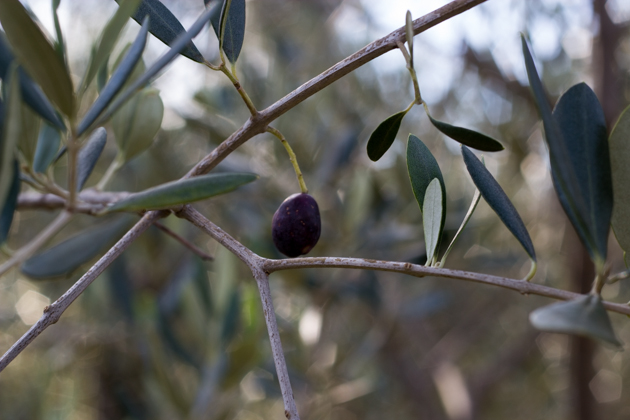

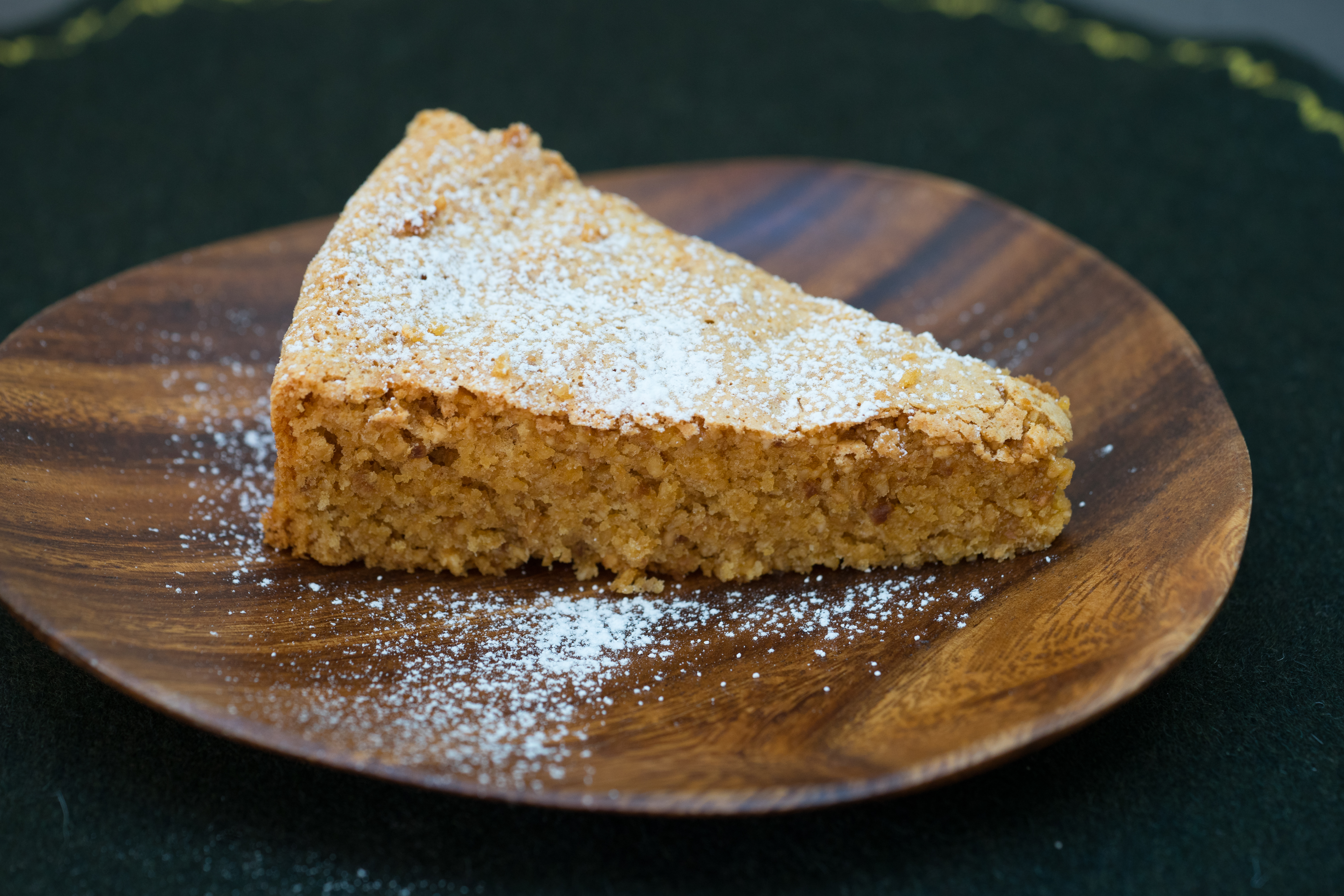
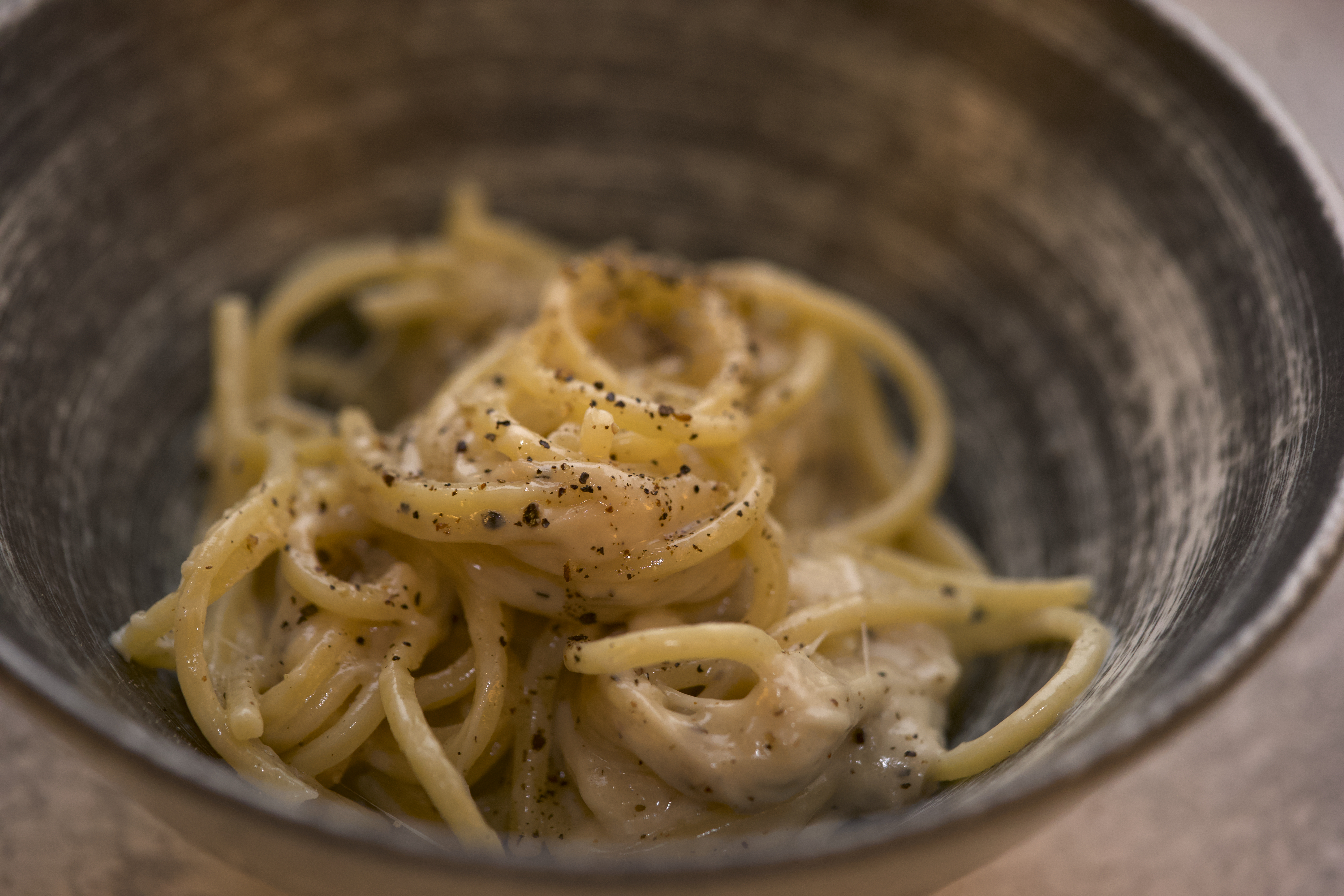
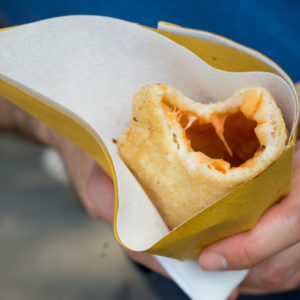
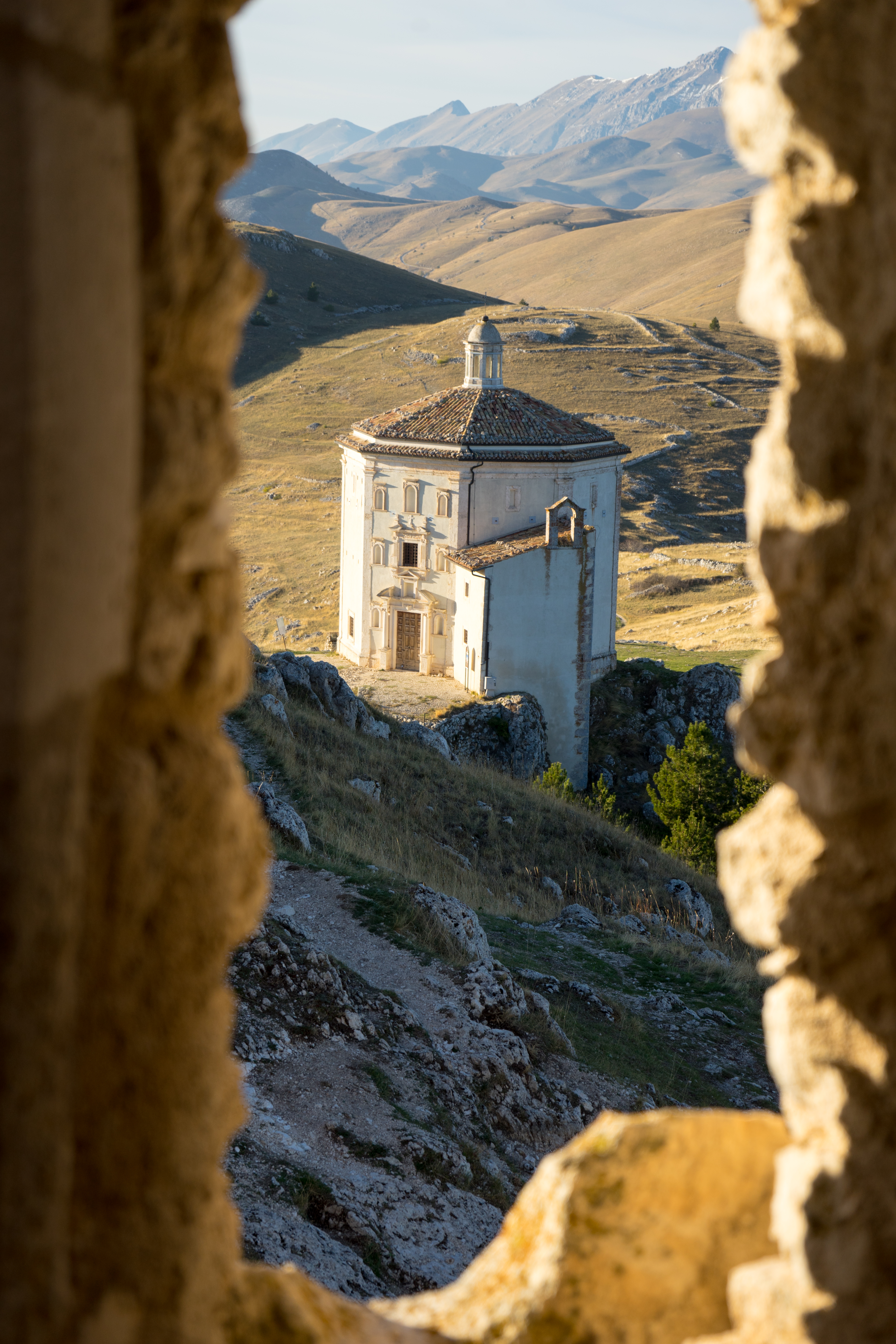
Leave a Reply